What’s the ROI of Automated Pallet Changing Machines in Spain's CE-certified Sector?
As an engineer who has spent his life on the factory floor, I know that every machine must justify its existence. You face constant pressure to cut costs, improve safety, and increase output. You look at your end-of-line packaging area and see workers manually transferring heavy loads from one pallet to another. It's slow, it's risky, and sometimes, products get damaged. This process feels like a necessary evil, a constant drain on your resources and a bottleneck that holds your entire production line hostage. You wonder if there's a better way, but the thought of a large capital investment makes you hesitate. Is automation just a fancy gadget, or is it a real solution that pays for itself?
The Return on Investment (ROI) for an automated pallet changing machine within Spain's CE-certified sector typically ranges from 12 to 24 months. This rapid payback is achieved through direct savings in labor, the near-complete elimination of product damage during transfers, a significant boost in operational throughput, and enhanced compliance with stringent European safety standards.
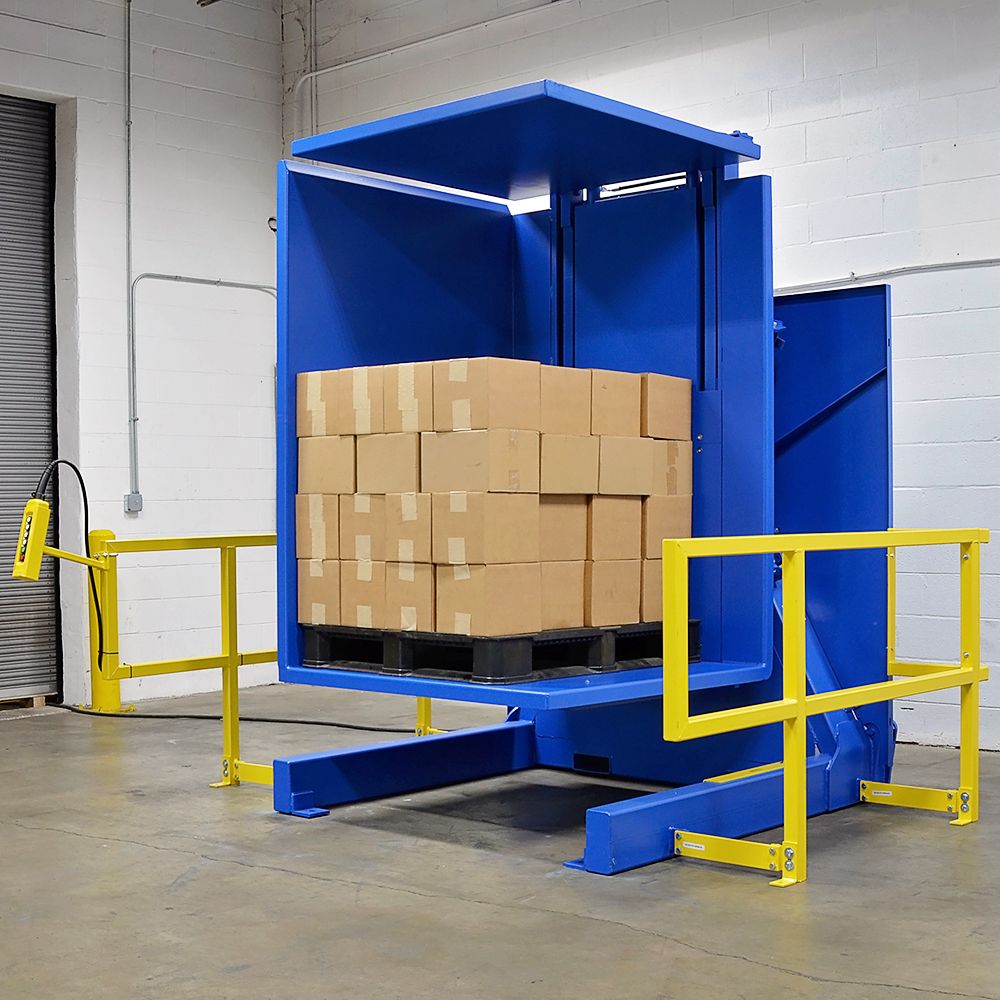
I have seen factory owners transform their operations with this one piece of equipment. But a quick ROI figure is not enough. You are a practical leader, like my friend Javier who runs a steel mill. You need to see the numbers and understand the mechanics behind them. You need to know how this machine will solve your specific problems in your specific market. So, let’s break down the real value of an automated pallet changer. We will look at how it directly impacts your costs, efficiency, and safety compliance in Spain.
How Do CE-Certified Pallet Changers Directly Impact Operational Costs in Spain?
You see the daily operational costs on your balance sheet. Labor is expensive, especially in Spain. Damaged goods are a direct loss of profit. These small, persistent costs can feel impossible to control. They slowly eat away at your margins, making it harder to compete and invest in growth. You might think this is just the cost of doing business. But what if you could turn that cost center into a source of savings? An automated, CE-certified pallet changer is not just a machine; it's a tool designed specifically to attack these operational costs at their source.
A CE-certified pallet changer directly cuts operational costs in Spain by reassigning manual labor to more valuable tasks, reducing product and pallet damage to almost zero, and potentially lowering insurance premiums due to improved safety. These direct savings create a clear and measurable financial impact from day one.
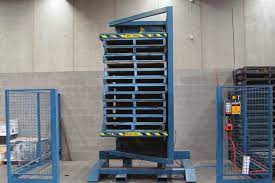
I remember talking to a factory manager in Catalonia. He was spending a significant amount of his budget on temporary labor just for his shipping department. His team would manually unstack boxes, move them, and restack them onto shipping pallets. It was their biggest bottleneck and source of product damage. He needed a solution that provided a clear financial return. When we analyzed the costs, the numbers spoke for themselves. Let's dig deeper into how these savings are realized.
Breaking Down the Cost Savings
The financial argument for automation becomes very clear when you look at the line items it affects. This is not about abstract benefits; it is about real money that stays in your business.
Labor Cost Reduction
Manual pallet changing is labor-intensive. It often requires two workers and a forklift. In Spain, where labor costs and social security contributions are significant, this represents a major ongoing expense. An automated pallet changer can be operated by a single person in a fraction of the time, or it can be fully integrated into a line with no direct operator. The workers who were previously doing this strenuous, low-skill job can be retrained and reassigned to higher-value tasks like quality control or machine maintenance. This is not about replacing workers; it's about elevating their contribution.
Product and Pallet Damage Elimination
Every time a load is handled manually, there is a risk of damage. Boxes get dropped, bags are torn, and containers are dented. This results in unsaleable goods, customer complaints, and returns. All of these directly hurt your bottom line. An automated pallet changer handles the entire load smoothly and securely. It clamps the load with controlled pressure, rotates it, and allows for a clean pallet swap without ever touching the product itself. The result is a damage rate that drops to virtually zero. This also applies to pallets. Expensive in-house plastic or hygienic pallets are protected from damage because they never have to leave your facility.
A Clear Comparison
Let's look at a simple cost comparison for a facility that changes 50 pallets per day.
| Cost Factor | Manual Pallet Changing (Annual Cost) | Automated Pallet Changing (Annual Cost) | Annual Savings |
|---|---|---|---|
| Labor | €35,000 (1.5 workers) | €5,000 (0.25 worker) | €30,000 |
| Product Damage | €15,000 (1% damage rate) | €750 (0.05% damage rate) | €14,250 |
| Pallet Damage/Loss | €5,000 | €500 | €4,500 |
| Total Annual Cost | €55,000 | €6,250 | €48,750 |
These are conservative estimates. For a high-volume operation like a steel plant or a major distribution center, the savings are even more dramatic. This calculation doesn't even include indirect savings from things like lower insurance premiums or better use of your factory space. The cost impact is direct, immediate, and substantial.
What Are the Hidden Efficiency Gains from Automating Pallet Exchange?
You have invested heavily in high-speed production lines and advanced manufacturing equipment. Your machines can produce goods at an incredible rate. But then, everything grinds to a halt at the very last step: packaging and shipping. You see pallets piling up, waiting for a forklift and a team to manually transfer them. This bottleneck negates the efficiency you worked so hard to build. It's frustrating because this "hidden factory" of inefficiency is costing you time and money. It limits your real-world capacity. Automation offers a way to unlock this trapped potential and make your entire operation flow smoothly from start to finish.
The hidden efficiency gains from automating pallet exchange come from drastically shorter cycle times, the elimination of end-of-line bottlenecks, and the ability to create a predictable, consistent workflow. This allows your production lines to run at their true capacity, increasing overall plant throughput without adding more production machinery.
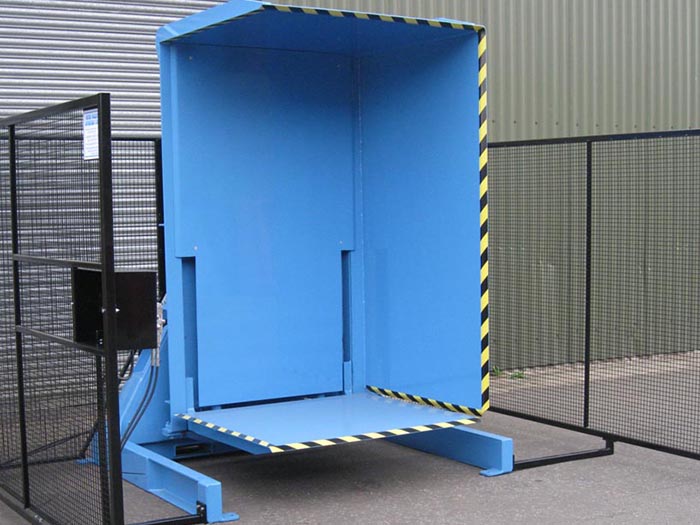
From my own journey starting SHJLPACK, I learned that throughput is king. It doesn't matter how fast one machine is if the next one in the chain is slow. A pallet changer synchronizes your logistics with your production speed. Think about it: a manual pallet swap can take anywhere from 10 to 20 minutes, depending on the load. An automated pallet changer does the same job in 60 to 90 seconds. Let's explore what that time difference really means for a high-volume factory.
Unlocking Your True Capacity
Efficiency is more than just speed; it's about predictability and flow. An automated system brings both to what is often a chaotic part of the factory floor.
Drastic Cycle Time Reduction
The most obvious gain is the speed of the exchange itself. What takes a team of workers and a forklift 15 minutes to accomplish, an automated system does in about 90 seconds. This is not just a small improvement; it's a revolutionary change. When you are processing 100 pallets a day, that time saving adds up to over 22 hours of saved labor and operational time every single day. This means the same number of staff can handle a much higher volume, or you can run your lines faster because you know the end of the line can keep up.
Eliminating Production Bottlenecks
The pallet changing area is a classic bottleneck. When it gets backed up, the signal travels backward up the production line. Conveyors stop. Wrapping machines sit idle. Production machinery has to be slowed down or stopped. It's a chain reaction of inefficiency. By automating the pallet swap, you create a smooth, continuous exit point for your finished goods. It becomes a reliable, predictable part of the process, just like any other machine on your line. This allows you to run your upstream equipment at its optimal, rated speed, helping you achieve goals like 95% overall equipment effectiveness (OEE).
Enabling 24/7 Operations and Integration
Manual processes are dependent on people being available. Automation is not. An automated pallet changer can be integrated with Automated Guided Vehicles (AGVs) and your Warehouse Management System (WMS) or Manufacturing Execution System (MES). The WMS can send an order to the pallet changer, an AGV can deliver the pallet, the machine performs the swap, and another AGV takes the finished pallet away to the shipping bay. This creates a "lights-out" logistics operation that can run 24/7 with minimal human oversight, a key step in achieving true digital transformation.
| Metric | Manual Pallet Changing | Automated Pallet Changing | Impact |
|---|---|---|---|
| Time per Pallet | 15 minutes | 1.5 minutes | 90% Reduction |
| Pallets per Hour | 4 | 40 | 10x Throughput Increase |
| Workflow | Unpredictable, stops/starts | Consistent, continuous | Eliminates Bottlenecks |
| Integration | Difficult, relies on people | Seamless with AGV/WMS | Enables Full Automation |
These are not just small tweaks. These are fundamental improvements that change how your entire factory operates. It transforms the end of your line from a chaotic cost center into a streamlined, efficient, and valuable part of your production process.
How Does Automation Align with Spain's Labor and Safety Regulations?
As a business owner in Europe, you operate under some of the strictest labor and safety regulations in the world. The EU Machinery Directive and specific Spanish laws on occupational health are not just guidelines; they are legal requirements with serious consequences. Manually handling heavy, unstable loads is one of the biggest sources of workplace injuries, particularly musculoskeletal disorders (MSDs). This creates a constant risk of accidents, worker compensation claims, and regulatory fines. You need to protect your people and your business. The pressure to ensure a safe work environment is immense, and proving compliance can be a challenge.
Automation, specifically with CE-certified machinery, is the most effective way to align your operations with Spain's stringent labor and safety regulations. It physically removes workers from hazardous tasks, and the CE mark itself serves as a declaration that the machine meets all essential EU health and safety requirements, significantly reducing your liability and risk.
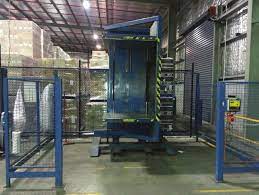
I have walked through hundreds of factories. The most successful ones, especially leaders like Javier, see safety not as a cost, but as a prerequisite for excellence. They know that a safe factory is an efficient and profitable factory. Investing in a CE-certified machine is not just about buying a piece of equipment; it's about investing in a guaranteed standard of safety. It's a proactive step to design risk out of your process. Let's look at what this means in practice.
Building a Foundation of Safety and Compliance
A CE-certified machine is engineered for safety from the ground up. This is not an afterthought; it is a core part of its design.
Compliance with the EU Machinery Directive
The CE mark is a legal requirement for selling machinery in the EU, including Spain. For a pallet changer, this means the manufacturer has conducted a thorough risk assessment and integrated necessary safety features. This includes robust physical guarding to prevent access to moving parts, light curtains that immediately stop the machine if an operator enters the area, dual-channel safety circuits, and clearly marked emergency stops. When you purchase a CE-certified machine, you are acquiring a solution that has already been verified to meet these high standards, simplifying your own internal safety audits.
Ergonomics and Injury Prevention
Manual pallet handling is a textbook ergonomic hazard. It involves repetitive lifting, bending, and twisting while handling heavy weights. This is a primary cause of back injuries, shoulder strain, and other MSDs, which are the leading cause of work-related illness in Spain and the EU. An automated pallet changer eliminates this manual task entirely. The machine does all the heavy lifting. This drastically reduces the risk of these common and costly injuries, leading to a healthier workforce, less absenteeism, and higher morale.
Reducing Liability
In the event of a workplace accident, authorities will investigate whether the employer took all necessary precautions. Using a non-certified or modified machine for a hazardous task is a huge liability. By contrast, implementing a fully compliant, CE-certified automated solution is powerful evidence that you have taken proactive steps to mitigate risk. This can significantly reduce your legal and financial liability and can also lead to lower premiums for your company's liability and workers' compensation insurance.
| Risk Factor | Manual Pallet Changing | Automated Pallet Changing | Regulatory Alignment |
|---|---|---|---|
| Ergonomic Risk | High (lifting, twisting) | Eliminated | Meets ergonomic standards |
| Impact/Crush Risk | Moderate (forklift, falling items) | Low (interlocked guarding) | Complies with Machinery Directive |
| Operator Error | High | Minimal | Process is controlled and repeatable |
| Compliance Proof | Requires constant training records & audits | CE Mark provides proof | Simplifies safety management |
Investing in a CE-certified automated pallet changer is one of the clearest statements you can make about your commitment to safety. It is a strategic decision that protects your people, your finances, and your company's reputation.
What's the Payback Period for a Pallet Changer in a High-Volume Spanish Factory?
You have seen the benefits: lower costs, higher efficiency, better safety. Now we get to the most important question for any CEO or factory owner: "When will I get my money back?" You need to build a solid business case to justify the capital expenditure. An investment must have a clear and reasonably short payback period. You cannot afford to tie up capital in equipment that doesn't deliver a tangible financial return. The good news is that for pallet changers, the calculation is straightforward, and the results are often compelling, especially for a high-volume operation.
The payback period for an automated pallet changer in a high-volume Spanish factory is calculated by dividing the total investment cost by the sum of all annual savings. For a typical facility, these savings—primarily from labor, eliminated product damage, and increased throughput—are substantial enough to result in a full payback period of 12 to 24 months.
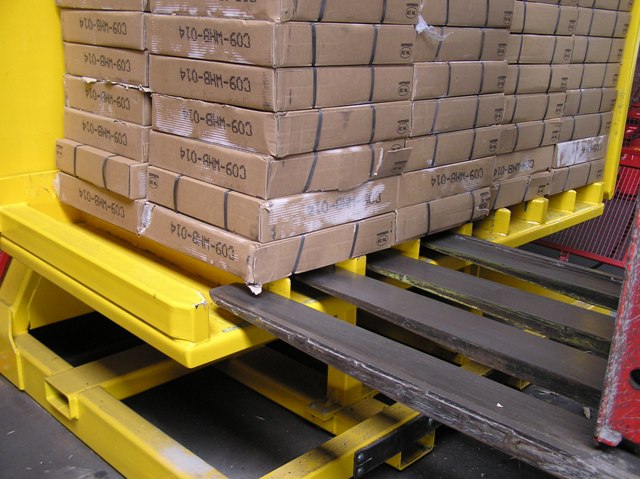
When I started my own factory, every single purchase was scrutinized. I know the feeling of signing a large check for a new machine. It’s a mix of hope and anxiety. That's why I believe in transparent, honest calculations. This isn't about sales talk; it's about engineering and economics. Let's build a sample business case together, using realistic numbers for a Spanish factory.
Calculating Your Specific Payback Period
To find your payback period, we need to do two things: calculate your total annual savings and know the total investment cost.
Step 1: Calculate Your Total Annual Savings
This is the sum of all the costs you will no longer have after you automate. The biggest contributors are labor and avoided damage.
- Labor Savings: Calculate the fully-loaded annual cost of the workers dedicated to manual pallet changing. This includes salary, social security, benefits, and any overtime.
- Damage Savings: Estimate the annual cost of products damaged during manual transfer. Be honest here; even a 1% damage rate on a high-value product adds up quickly.
- Efficiency Gain (Value): This one is harder to quantify but is very real. A simple way is to calculate the value of the extra production you can now ship because the bottleneck is gone. If you can ship 5% more product, what is the profit on that extra volume?
- Other Savings: Include savings from pallet damage, reduced insurance premiums, or re-allocated forklift time.
Step 2: Determine the Total Investment
This is more than just the price of the machine. It should include the cost of the pallet changer itself, plus shipping, installation, commissioning, and any necessary training for your team. A good supplier like SHJLPACK provides a clear, all-in quote.
Step 3: Do the Math
The formula is simple: Payback Period (in years) = Total Investment Cost / Total Annual Savings
Let's use a sample worksheet for a factory in Spain:
| Calculation Item | Value (Example) | Notes |
|---|---|---|
| A. Total Investment Cost | €85,000 | (Machine, Shipping, Installation) |
| B. Annual Labor Savings | €45,000 | (1.5 workers at €30k/year each) |
| C. Annual Damage Savings | €20,000 | (1% damage rate on €2M of product) |
| D. Other Annual Savings | €5,000 | (Pallet repair, forklift time, etc.) |
| E. Total Annual Savings (B+C+D) | €70,000 | |
| F. Payback Period (A / E) | 1.21 years | (€85,000 / €70,000) |
In this realistic scenario, the machine pays for itself in just over 14 months. After that, the €70,000 in savings goes directly to your bottom line, year after year. This is the kind of hard data that justifies an investment. It's a strategic move that delivers predictable, long-term financial returns.
Conclusion
Investing in an automated, CE-certified pallet changer is a clear-cut business decision. It directly addresses costs, efficiency, and safety, delivering a strong, fast ROI and long-term competitive advantage.



